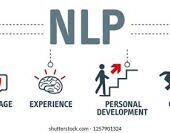Bulk API 2.0 provides a simple interface to load large amounts of data into your Salesforce org and to perform bulk queries on your org data.
The Bulk API is one of several APIs that Salesforce provides out-of-the-box. It’s a programmatic, REST-based API solution that allows you to work with large data sets in Salesforce. This process works asynchronously, meaning that it will work concurrently with other data operations in your org.
What is the difference between REST and BULK API SFDC?
Bulk API 2.0 is used in Salesforce when there is a need to process a large amount of data. When data processing involves more than 2,000 records this is an ideal use case for using Bulk API 2.0. If records are fewer than 2,000, it requires “bulkified” synchronous calls in REST (for example, Composite) or SOAP.
What is the best practice for bulk API?
A good rule of thumb is to start with a batch size of around 10,000 records and adjust as needed based on the performance of your specific use case. Another important best practice is to use the correct operation for your data load. The Bulk API supports different operations such as insert, update, upsert, and delete.
What is the daily limit for bulk API?
Bulk API V2, limits the maximum number of records (100 million) per 24-hour period, instead of limiting the number of Bulk Jobs and Batches. Both Bulk API and Bulk API 2.0 use the same REST API framework as other Salesforce REST APIs.
What is the benefit of bulk API?
Bulk API 2.0 is a RESTful API that allows you to perform large-scale data operations on Salesforce objects, such as insert, update, delete, and query. Bulk API 2.0 is designed to simplify the process of creating and managing bulk jobs, as well as to improve the performance and reliability of bulk data processing.













